Chin'ekisai Festival
Date: February 13th
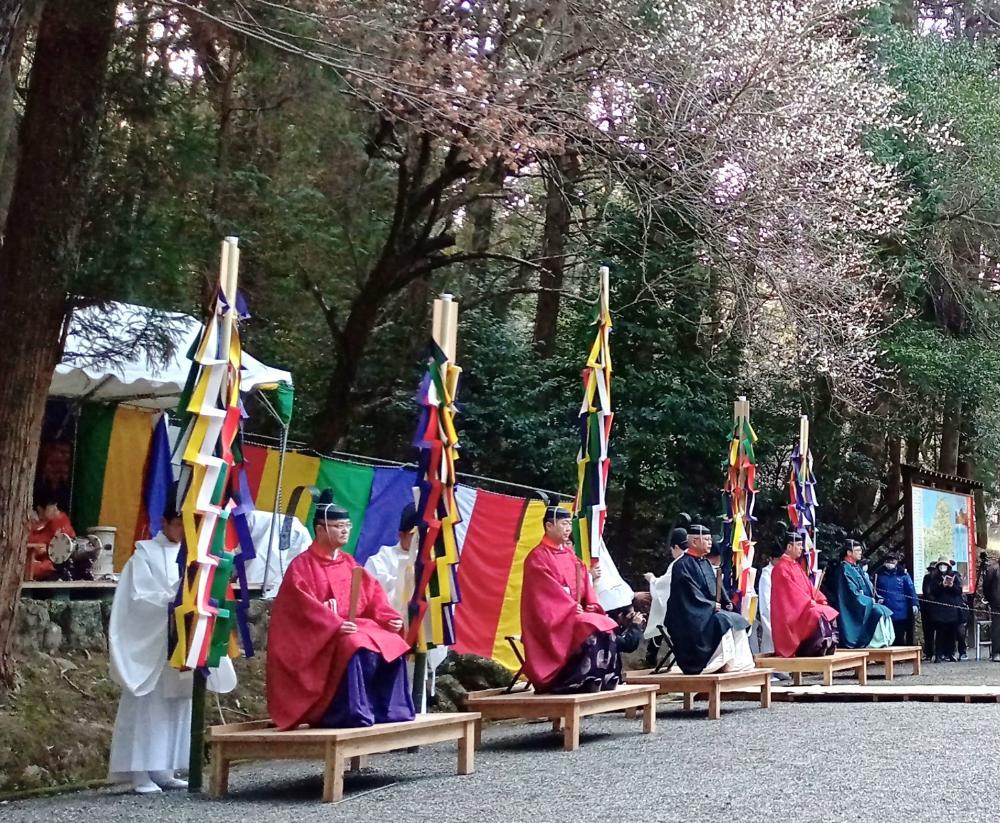
Chin'ekisai (2024)
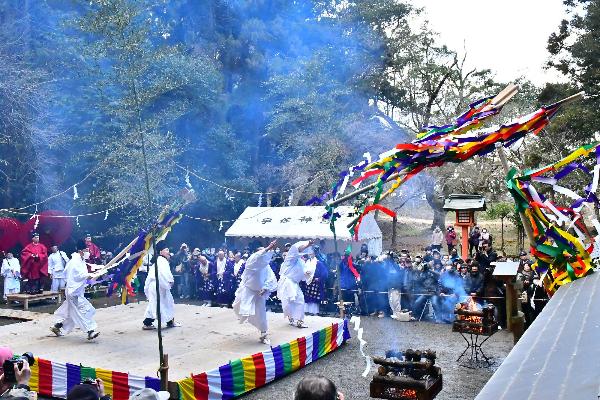
Heigoshi ritual
The Chin’ekisai (“plague-banishing festival”) is a purification rite that includes fire rituals, Shinto prayers, Buddhist sutra chanting, and dance. Its highlight is the lively Heigoshi ritual where attendants throw giant gohei wands over a torii gate to symbolize warding off disease. The event is held at Yasaka Jinja, one of the subsidiary shrines of Usa Jingu Shrine, with the goal of preventing epidemics, natural disasters, and other misfortune. The Chin’ekisai is a rare example of a festival that involves both Shinto priests and Buddhist monks, reflecting the long history of religious syncretism at Usa Jingu.
It is said that the Chin’ekisai originated a thousand years ago as an annual ritual in which monks from Buddhist temples in the Usa Jingu complex chanted the Heart Sutra through the night. For this reason, the festival is still sometimes referred to by its old name, Shingyo-e (“Heart Sutra ceremony”). Following the government-ordered separation of Shinto and Buddhism in 1868, the Chin’ekisai became a purely Shinto ritual and was renamed accordingly. However, its present-day form once again includes Buddhist monks reciting the Heart Sutra to honor ancient traditions.
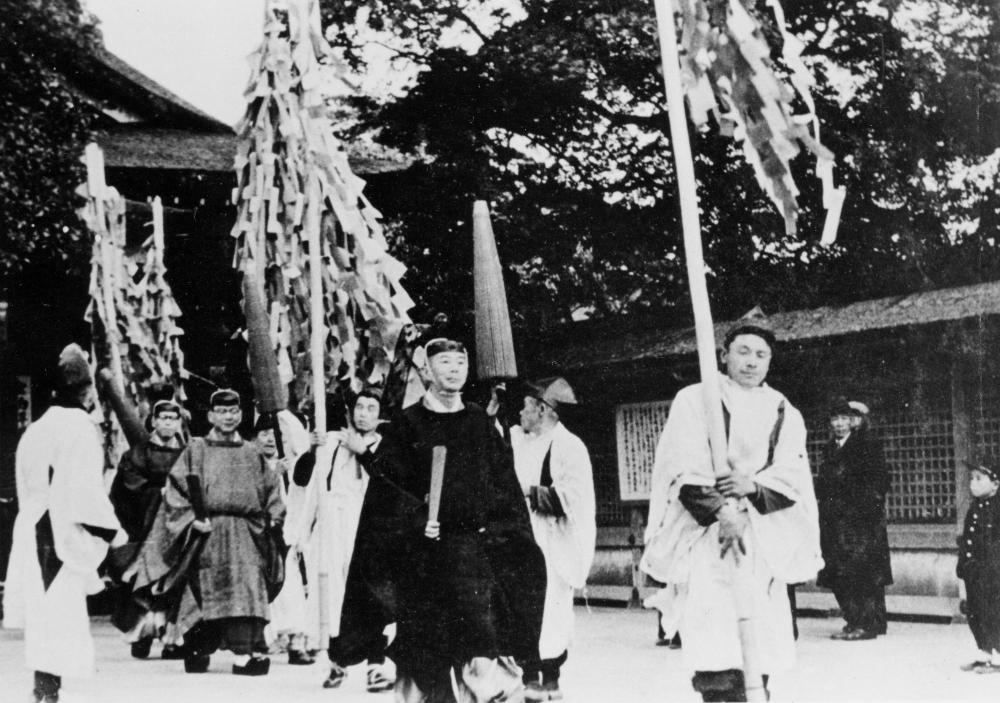
Procession of Shinto priests and assistants heading to Yasaka Jinja Shrine (mid-twentieth century)
On February 13th, Shinto priests from Usa Jingu and Buddhist monks of the Shingon school (primarily from Dairakuji Temple) hold a purification ceremony at the Haraedo platform and then proceed to the Jogu (Upper Shrine) for a prayer service. At the Jogu, attendants dressed in white collect several large sacred gohei wands that are approximately 3.5 meters long. The procession then heads to the Gegu (Lower Shrine), where further prayers are offered, and finally arrives at Yasaka Shrine, where fire braziers and a special stage are set up in front of the outer torii gate.
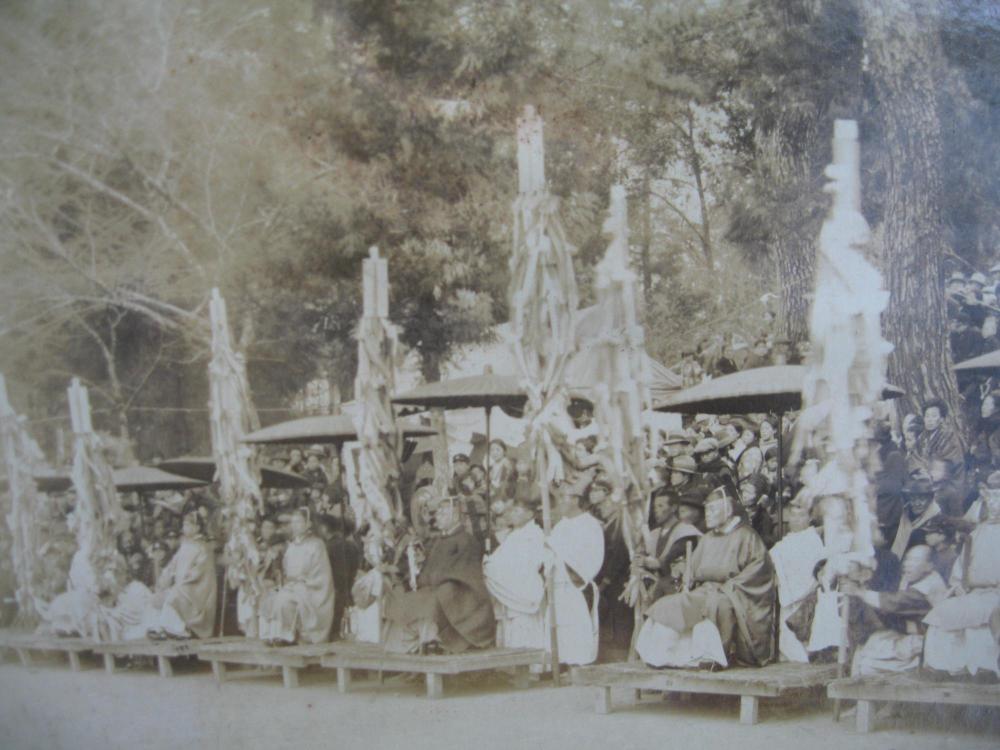
Participants ready to begin the ritual (mid-twentieth century)
After the head priest of Usa Jingu recites a formal prayer, the Heigoshi ritual begins, and attendants try their best to hurl the giant gohei wands into the precincts of Yasaka Shrine. It is considered the most auspicious if a gohei passes over the torii gate. The colorful paper streamers from the gohei are believed to protect a household from sickness and disasters for a year, so many people used to rush to try and claim one as a charm. The last and largest of the sacred wands is carried into Yasaka Shrine at a dash by several attendants.
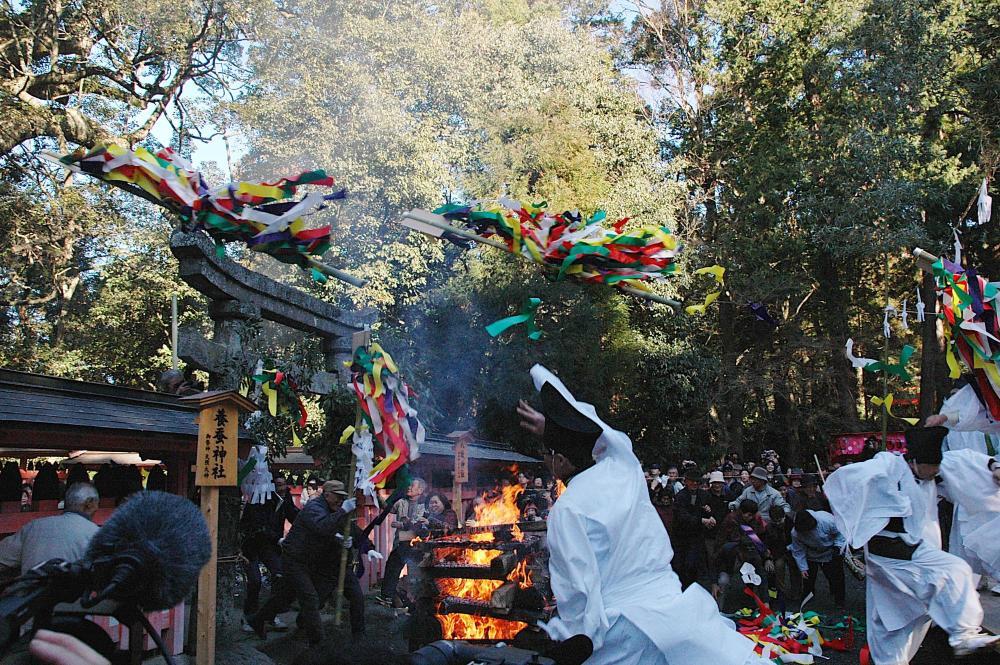
Throwing sacred wands over the torii gate
Following the Heigoshi, two bugaku court dances are performed on the stage in front of the shrine. Enbu is a sacred dance with a halberd that serves as a purification rite for the stage, and Ryo’o (Prince of Lanling) tells the story of a valiant prince from sixth-century China. As the final ritual of the Chin’ekisai, Buddhist monks chant the Heart Sutra. After all the rites are over, priests toss mochi rice cakes grilled over a purifying fire to the people who gathered to witness the ceremony.
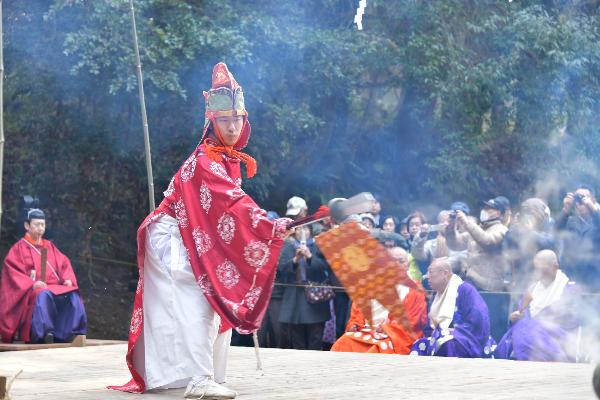
Enbu
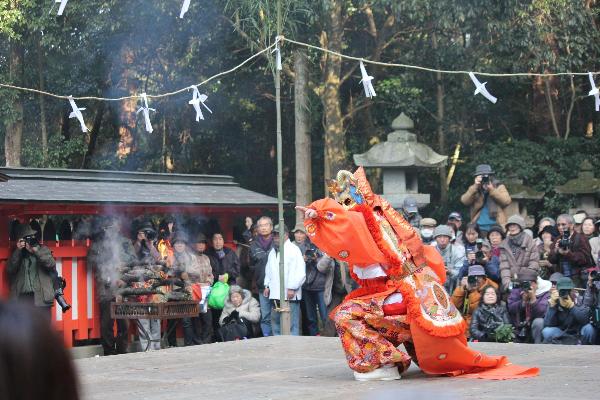
Ryo’o (Prince of Lanling)
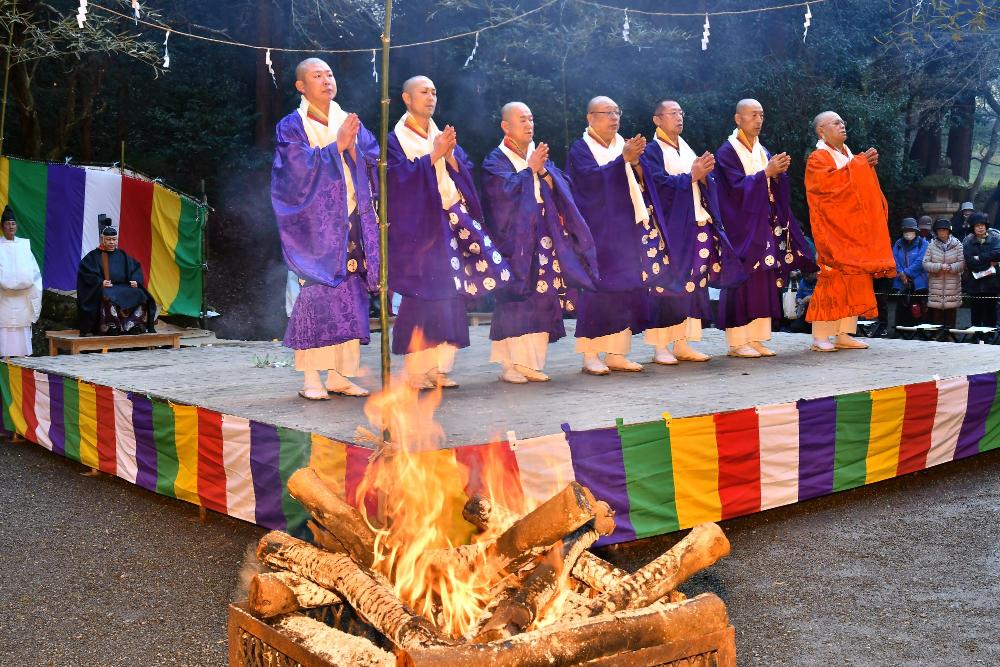
Buddhist monks chanting the Heart Sutra

This English-language text was created by Japan Tourism Agency.







更新日:2024年03月18日